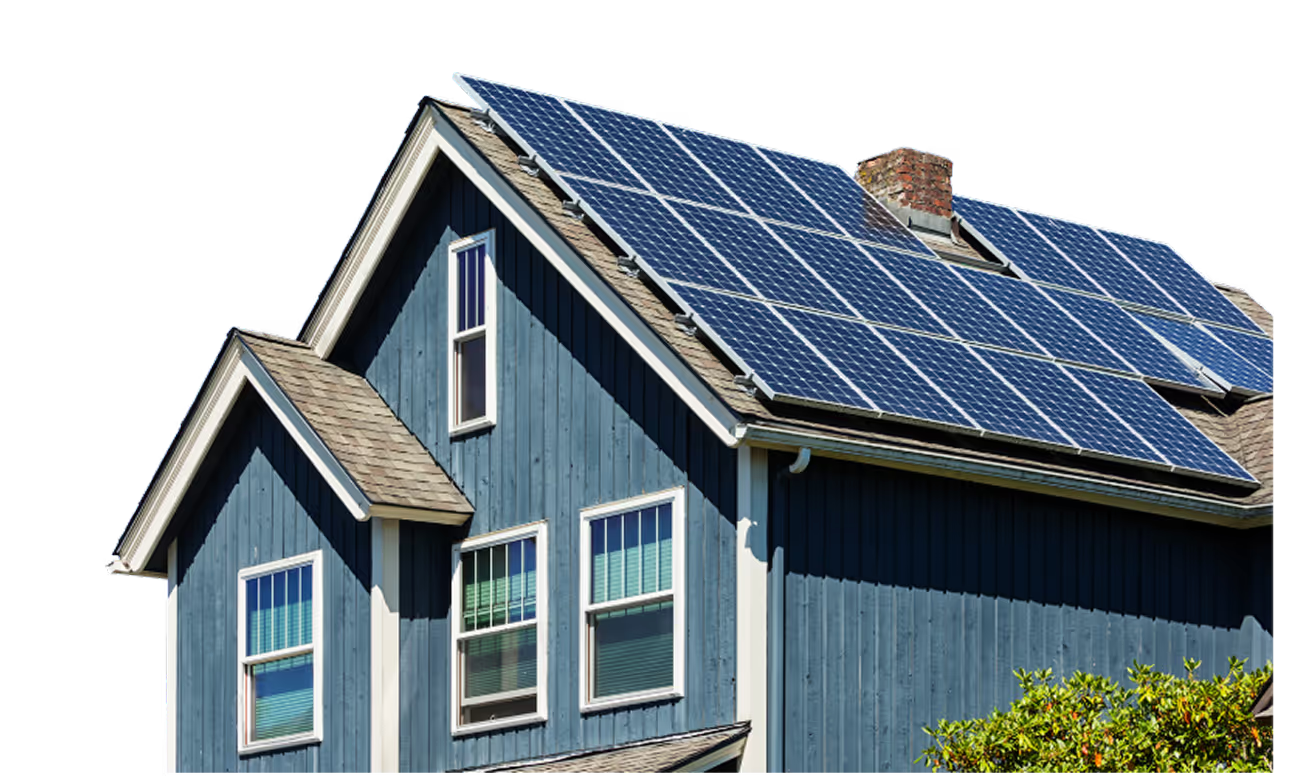
Bills, bills, and more bills — the culprit of the large dents in our payday. Ever wondered how much you could save on those hefty electricity bills? If only there was a solution to these ever increasing bills.. oh wait, there is!
Introducing Solar Panels: These wonderful inanimate objects, unlike us, actually enjoy busking in the burning weather. It boasts its usefulness in sunny Malaysia by turning the scorching sun’s rays into clean renewable energy.
Hang on!
Interested in solar? Give our free interactive solar calculator tool a try! Draw an outline of your roof and you'll be able to see your solar estimate within minutes!
Try Our Solar Calculator Today!

Why Is My Electricity Bill In Malaysia Increasing?
As electricity prices in Malaysia surge, many are left wondering why their bills are on the rise.
The recent tariff adjustments have impacted households with monthly bills that range from RM230 to RM738, with an increase of RM12 to RM32. This significant change affects about 15% of Peninsular Malaysia's domestic consumers.
An article by the New Straits Times added that the adjustment in tariff pricing is aimed at promoting responsible energy usage through targeted subsidies. Despite the increase, Tenaga Nasional Berhad (TNB) has also announced that 85% of domestic users remain unbothered from the price hike.
The Imbalance Cost Pass-Through (ICPT) rebate of RM0.02 per kWh has commenced, and is set for homes using up to 600kWh a month, a significant change from the previous cap at 1,500kWh that ended in 31 December 2023. If your monthly usage adds up to 1,500kWh, the RM0.10 per kWh surcharge stays the same until 30 June 30 2024.
How Do I Reduce My Electricity Bill In Malaysia?
Still feeling the pinch of your bills? Need a solution? We’re here to help. Whether you’re running a household or a business, having a reduction to your recurring bills will make a significant difference.
Upgrade to Energy Saving Bulbs
Switching to LED bulbs from the usual incandescent and halogen bulbs, is a quick and effective way to reduce your energy consumption. LEDs use at least 75% less energy than traditional bulbs, and they even last much longer. This makes it a relatively easy way for anyone looking to cut costs.
Switch to Energy-Efficient Appliances
The second step in slashing your electricity bill is to invest in energy-efficient appliances. When purchasing these products, keep a lookout for energy-saving seals or certifications. They might cost a bit more upfront, but you’ll thank your appliance in the future when the electricity bills rack up.
The Power of Solar Panels
Solar power isn't just for environmental enthusiasts anymore. With solar panels becoming much more affordable in the past decade, utilising the powerful rays of the sun to meet your energy needs can drastically slash your monthly electricity costs. Plus, any excess energy can often be sold back to the grid, earning you credits on your bill.
How Does Installing Solar In Malaysia Save Me Money?
Solar power offers an alternative that feeds and strives off the abundant sunlight. This means that you’ll be generating your own electricity, in turn reducing your dependence on the grid and the fluctuating costs associated with it.
Let’s not forget the initiatives set up by the Malaysian government, such as the Imbalance Cost Pass-Through (ICPT) rebate and the Net Energy Metering (NEM) scheme, further pushes the financial benefits of going solar. These programs allow homeowners to earn credits or get compensated for surplus energy produced that are fed back into the grid, effectively lowering monthly bills.
The savings from the lowered electricity bills can end up offsetting the initial investment in the solar panels, making it an extremely cost-effective solution for combatting the high prices and achieving long-term financial savings.
Is Solar In Malaysia Really That Good?
With soaring electricity prices, switching to solar energy emerges as a financially sound decision. And of course, other than installing solar panels to combat future price hikes in electricity bills, you’re also investing in a sustainable future.
To get a better understanding, sit back and relax, while we give you the rundown on why switching to solar might be the best option for you.
Solar Energy vs Traditional Energy
When you choose to go solar, you're choosing a cleaner, greener path that healthily impacts the climate. It’s a smart move that not only cuts your electricity costs but also supports the government’s green ambitions for the country.
If you’re unfamiliar with the traditional energy sources that Malaysia uses, here’s a quick explanation on the fossil fuels that are commonly used in the country.
Coal
Coal is a significant source of electricity in Malaysia. In 2022, data collected from Ember, a climate think tank, stated that 42% of Malaysia’s electricity is fueled from coal. However, the implications with utilising coal as an energy source comes with a cost.
You see, the carbon produced from burning coal, combined with oxygen in the air, forms carbon dioxide. A colorless and odorless gas that may seem harmless, but when a significant amount is released into the atmosphere, traps the earth’s heat, causing global warming.
Gas
The same data collected from Ember showed that 38% of Malaysia’s electricity came from natural gases. Malaysia has substantial natural gas reserves, and is favoured for its relatively cleaner combustion compared to coal and oil.
However, its main components are made up of a greenhouse gas more potent than carbon dioxide—methane. Additionally, gas plants release nitrogen oxide that pollute the climate and can cause respiratory issues to residents in the area.
Oil
Oil plays a smaller role in Malaysia's electricity generation, but it is still used in more remote areas and for backup power generation. The use of oil has significantly decreased over time in the country’s favour of natural gas and coal.
Oil pollution however is pretty different from the effects of coal and gas. Unlike its counterparts, the devastating effect occurs when oil is spread over a water surface that restricts plants and animals from getting oxygen.
For those of you who may be wondering what’s the difference between solar energy and traditional energy sources, this one’s for you! We’ve added a brief, easy to understand, visual guide that will help you recognize Solar's benefits.

Are Solar Panels Expensive?
Now the question on everyone’s mind, are solar panels expensive? Understanding the costs of these powerhouses is crucial when considering the switch to solar energy.

Here’s an estimated table of the price points of solar panels in Malaysia. If you’re interested to find out more, head over to our guide on the price of solar panels and its relevant costs!
House TypeAvg. Number of Solar PanelsSolar Panel System SizeAvg. CostTerrace House84 kWpRM15,600Semi-detached House168 kWpRM28,000Bungalow3216 kWpRM41,600
Although the initial price tag can be quite steep, solar energy pays for itself over time. And for consumers who prefer not to pay upfront with other solar companies, you have something to look forward to: GetSolar’s Rent-To-Own (RTO) program!
Our Rent-To-Own program is designed to help you afford your very own solar system, with zero upfront costs. With fixed monthly installments, the solar panel provider maintains ownership throughout the lease period. Once all payments are completed, full ownership of the solar panels transfers to the customer.
While this program is not yet available in Malaysia, our RTO program could soon land a solar system on your roof. When we do arrive in sunny Malaysia, we’ll reach out and help you make a seamless transition to solar energy as soon as the program launches.
How Is the Government Supporting Solar Energy Adoption in Malaysia?
Diving into the heart of Malaysia's green venture, the National Energy Transition Roadmap (NETR) structures an ambitious plan for renewables to fuel the country’s energy consumption. Heading off with 31% by 2025, 40% by 2035, and a whopping 70% by 2050, setting the pace toward net-zero greenhouse emissions.
This roadmap not only showcases Malaysia's commitment to a sustainable future but also highlights the pivotal role renewable energy, especially solar, will play in our energy landscape.
If you’re still on the fence about whether you should convert to solar amidst the rising electricity costs, here are more goodies offered by the Malaysian government. Under the Net Energy Metering (NEM) 3.0 program, an additional quota of 100MW has been allocated to NEM Rakyat, and 300MW to NEM Nova, as the previous quota of 150MW and 800MW, respectively, have been almost taken up.
Interested readers can check the current quota balance here.
For your viewing pleasure, we have accumulated a list of additional initiatives for business owners and homeowners.


Green Investment Tax Allowance & Green Income Tax Exemption
In Conclusion
And there you have it, readers — your brief guide to embracing solar energy amidst the rising electricity prices. Whether you're feeling the pinch of your monthly bills or simply looking for a greener alternative, it's evident that solar energy stands out as a viable solution.
It's clear that the shift towards solar is more than just an environmental choice, it's a smart financial move. With programs like GetSolar’s Rent-To-Own nearing the borders, readers who are considering making the switch, the opportunities for savings and supporting a greener planet are easily within reach.

Rent-to-Own Solar for Business with Guaranteed Performance
Immediate ROI




Rent-to-Own Solar. $0 Upfront cost. Guaranteed Savings
(10-Year RTO plan)
+ 10-Year Free Maintenance










